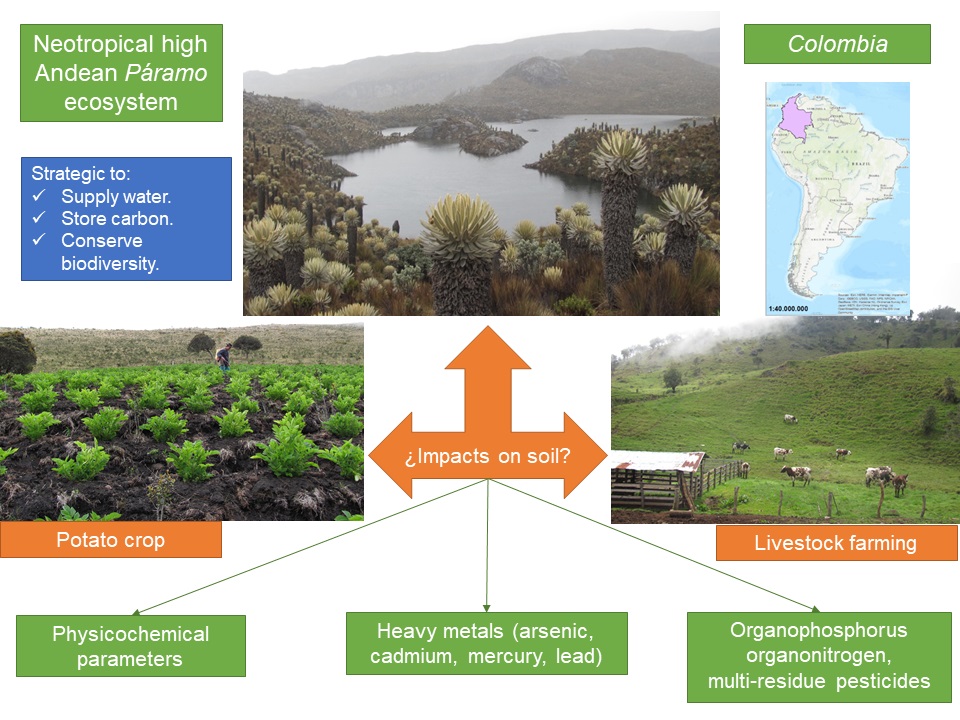Heavy metals and pesticides in soils under different land-use patterns in neotropical high Andean Páramos
25/Apr/2022
ABSTRACT Páramos are unique strategic ecosystems in the neotropical region, above the upper limit of closed forest and below the lower limit of perpetual snow in the tropical mountains of Central and South America. Their soils are of particular importance for water regulation and carbon storage; however, thousands of peasants develop agricultural activities such as potato cultivation and livestock farming in these areas. This research aimed to evaluate the possible heavy metals contents (arsenic, cadmium, mercury, and lead) and pesticide […]
TRACE ELEMENTS IN NATIVE VEGETATION AND INTENSIVE AGRICULTURE AREAS IN MATO GROSSO, BRAZIL, DETERMINED BY TOTAL REFLECTION X-RAY FLUORESCENCE
01/Jul/2015
Total Reflection X-ray Fluorescence (TXRF) is a promising technique for analysis of trace elements (TEs), mainly because samples do not need to be digested, thereby reducing generation of waste and emission of toxic fumes. This study compared the levels of the TEs:Cr, Mn, Ni, Zn, Cu, As, Se, Hg, and Pb in soil samples collected from intensive agricultural and native vegetation areas, as determined by TXRF and by flame or graphite furnace atomic absorption spectrometry (FAAS/GFAAS). In addition, we compared […]
Survival of Bradyrhizobium and Azorhizobium in heavy metal contaminated soil
01/Mar/2002
An experiment was carried out at the Soil Science Department of Federal University of Lavras (MG), from November/1999 to January/2000, aiming to evaluate the survival of strain and isolates of rhizobia, in heavy metal contaminated soil.The possible relationship between rhizobia tolerance in culture medium and its survival in contaminated soil was also verified.From a group of 60strains/isolates tested at a previous study for metal tolerance in YMA medium, two out of the most tolerant microorganisms [BR-4406 (strain recommended as inoculant […]
Leaching of heavy metals in soils amended with sewage sludge
01/Sep/1999
This experiment was conducted in leaching tubes filled with soils classified as Typic Quartzipsament (AQ), Typic Hapludox (LV) and Rhodic Typic (LE). Sewage sludge was periodically added and incorporated to the soils in a total amount corresponding to 156,0 t ha-1 (dry weight basis), for an incubation period of 310 days. The soils were then treated with water and the following salt solutions: 0.9 mol L-1 KCl; 0.9 mol L-1 KNO3; 0.3 mol L-1 K2SO4 and 0.3 mol L-1 Ca(NO3)2. […]

